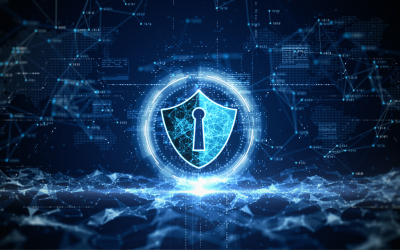By Saadia Shah
Over the past 5 years, artificial intelligence (AI) has undergone a significant transformation in both professional and personal realms. Within the cybersecurity domain, AI has become a powerful tool for attackers to automate and refine their attacks, and an opportunity for defenders to strengthen the defense landscape. Considering AIs emergence as a defining technology, what foundational strategies must be adopted to ensure proactive readiness across these domains?
Evolution from Traditional Cybersecurity to AI-Driven Paradigm
Evolution from traditional cybersecurity to an AI-driven paradigm represents a shift from reactive to proactive and predictive defense models. Understanding the implications of paradigm change is essential prior to proceeding with an analysis of future requirements.
| Adoption Velocity |
Adoption Velocity OpenAI reached 1 million users within just 5 days of launch, while Facebook needed 10 months and Netflix took 3.5 years to hit the same milestone. With underground communities sharing tactics and open-source AI tools, the adoption of AI technologies among cybersecurity defense teams and threat actors is alarmingly increasing.
|
| Smarter Automation |
Rigid signature-based defenses are replaced by adaptive, dynamic threat modeling and behavioral AI-powered systems capable of identifying and mitigating threats in real time. Threat actors also leverage the same tools and shift from manual attacks to fully automated attacks, such as phishing attacks, malware generation, and AI-powered reconnaissance methods.
|
| Cloud Power |
We’ve evolved from limited, siloed data storage to cloud-native data lakes with petabyte-scale capacity, empowering analysts like never before. At the same time, cybercriminals are using cloud infrastructure to host malware and advance their attacks with speed and efficiency.
|
| Predictive Defense |
Modern systems now anticipate and block threats using subtle behavioral and contextual signals, far beyond the limitations of traditional signature-based malware detection. Threat actors are turning predictive defense mechanisms into predictive offense tactics.
|
| Contextual Intelligence |
AI-powered systems now analyze not just isolated events but also provide a quick understanding of why they matter. On the other hand, threat actors use it to gather and analyze contextual data, such as user habits, geolocation, and even tone of voice, to create highly sophisticated, hyper-targeted social engineering campaigns.
|
AI in Cybersecurity: A Double-Edged Sword
On one hand, AI advancements, including nefarious chatbots (e.g., WormGPT, FraudGPT, and DarkBART), are poised to significantly escalate the cybersecurity threat landscape and amplify their capabilities. These tools can provide resources and mechanisms for even script kiddies and novices to launch highly sophisticated cyber attacks. The most dangerous aspect is that there are few or no ethical constraints.
Some benefits of AI technologies to adversaries may include:
- Improved ability to discover the weaknesses in cybersecurity defenses.
- Increased sophistication and automation in cyber threats.
- More effective and well-written phishing/spearphishing emails and messages.
- Increased volume of cyber attacks.
- Generated custom malware and ransomware.
- Menacing deepfakes. Potential fraud associated with deepfake photos, videos, or audio.
- Improved ability to uncover zero-day vulnerabilities.
On the other hand, AI advancements, including AI-powered tools, have become an integral part of the cybersecurity industry. They provide many advantages over traditional threat response and mitigation techniques.
These tools have improved workforce efficiency to accomplish more with fewer resources like:
|
Smarter defenses |
Faster threat response |
|
Predictive threat intelligence |
Detect and block cyberthreats |
|
Streamlined security operation |
Automate repetitive tasks efficiently and effectively |
|
Prioritize critical processes |
Risk-based approach and real-time monitoring |
|
Act ahead |
Proactively tackle threat actors and their tactics |
|
Enhanced authentication |
Optimize identity and access management |
Developing a Strategic Understanding for the Future
With AI rapidly revolutionizing and transforming cybersecurity, empowering both defenders and adversaries, the real challenge lies in how to develop a strategic understanding for the future to achieve greater benefits. The answer is not simple; it requires a shift towards developing a strategic understanding of future needs and emerging demands.
For the promising future of AI in cybersecurity, as well as AI to accelerate our current security defense system, security leaders, along with policymakers, must advocate for robust governance and ethical AI frameworks to gain digital trust. This proactive approach is crucial to ensure that defensive capabilities remain ahead of evolving threats and threat actors.
Another significant aspect is the education and training of the end users, as reliance on individuals alone as the primary and ultimate defense mechanism is outdated. The far more challenging and complex threat environment emphasizes the need for enhanced awareness and preparedness. To achieve and maintain strategic superiority, organizations should consider equipping the end user with the right knowledge and expertise to efficiently handle the complexities of the operational environment and successfully collaborate with team members to ensure timely and risk-based decisions in critical moments.
About IBSS
Since 1992, IBSS, a woman-owned small business, has provided transformational consulting services to the Federal defense, civilian, and commercial sectors. Our services include cybersecurity and enterprise information technology, environmental science and engineering (including oceans, coasts, climate, weather, and satellite), and professional management services.
Since 2014, IBSS has provided full-spectrum cybersecurity services to support security operations, engineering, and analytics. Our work led to an 86% threat surface reduction and 96% client approval. For additional information, see IBSS’ Cybersecurity Capabilities. Read more About Us.
Keywords: cybersecurity, cybersecurity company, zero trust, ICAM, GRC, EDR, security operations, CMMC, AI





